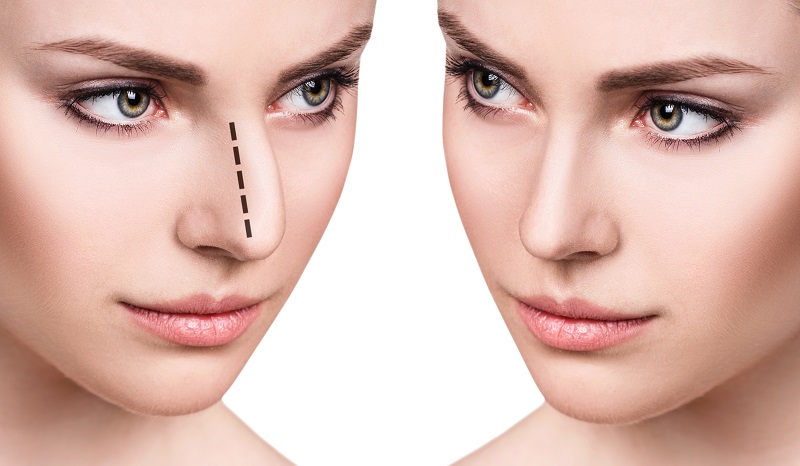Understanding Rhinoplasty Costs
Cost Range
The average cost of primary rhinoplasty typically ranges between $3,000 to $15,000. This wide range reflects various factors including surgeon’s fees, facility costs, and geographic location. Revision rhinoplasty, on the other hand, often comes at a higher price due to its complexity.
Patients should anticipate these figures when budgeting for their surgery. It’s crucial to have a realistic financial plan in place.
Aesthetic Goals
Balancing aesthetic desires with budget constraints is essential. Patients must communicate their goals clearly while considering the financial implications.
Choosing a qualified surgeon who understands your vision can significantly impact rhinoplasty results. However, this choice might also influence the overall cost.
Surgical Complexity
The complexity of the surgery greatly affects the final cost. Simple procedures like minor reshaping are less expensive than more extensive reconstructive work.
Factors such as the need for cartilage grafting or correction of previous surgeries add to the complexity and cost. Each patient’s needs are unique, leading to variations in pricing.
Breakdown of Rhinoplasty Expenses
Surgeon’s Fees
Surgeon’s fees vary widely, depending on their experience and the procedure’s complexity. Primary rhinoplasty generally costs less than revision surgery. This is because revision procedures often require more time and skill to correct previous work and achieve the desired outcome. Patients should expect higher fees for surgeons with specialized expertise in rhinoplasty.
Surgeons with a high success rate may charge more, but they bring valuable experience to the table. This expertise can mean a smoother recovery and better results.

Operating Room Fees
Operating room expenses are another significant part of rhinoplasty costs. These fees cover the use of the facility where the surgery takes place. High-quality surgical facilities ensure a safer environment and access to advanced technology, which can contribute to successful outcomes.
Facilities with state-of-the-art equipment often have higher fees. However, they provide an added layer of safety and efficiency during surgery.
Anesthesia Fees
Anesthesia fees depend on the procedure’s length and complexity. Longer surgeries require more anesthesia, which increases costs. Anesthesiologists play a crucial role in patient safety during surgery.
Their expertise helps manage pain and consciousness levels, ensuring a comfortable experience for patients. The cost reflects their skill in adjusting anesthesia levels precisely throughout the procedure.
Insurance Coverage for Nose Surgery
Medical Necessity
Insurance often distinguishes between rhinoplasty for medical necessity and cosmetic reasons. Procedures deemed necessary for health, such as correcting a deviated septum to improve breathing, are more likely to receive coverage.
Patients facing chronic respiratory issues may find relief in knowing their surgery could be financially supported. It’s crucial to have a doctor’s diagnosis to back up the medical need.
Cosmetic Reasons
Cosmetic rhinoplasty, aimed at enhancing the nose’s appearance without a health-related reason, typically doesn’t get insurance coverage. However, if a surgical procedure initially intended for medical purposes also improves the nose’s look, some costs might still be covered.
Understanding this distinction is vital before planning your surgery.
Checking with Providers
Always check with your insurance provider before proceeding with any surgery. Policies vary greatly, and what one covers, another might not.
Getting pre-approval can offer peace of mind and prevent unexpected bills. This step is essential for anyone considering rhinoplasty and hoping for insurance support.
Financial Relief
For eligible patients, insurance coverage can significantly reduce out-of-pocket expenses. This potential financial relief makes it imperative to explore all options with your healthcare provider and insurance company.
It could transform an otherwise burdensome expense into a manageable investment in your health and wellbeing.
Factors Influencing Total Cost
Surgeon Experience
The surgeon’s expertise plays a crucial role in the total cost of rhinoplasty. Highly experienced surgeons often charge more due to their proven track record of successful outcomes. This factor can significantly elevate the average cost, especially in complex cases.
Surgeons with years of practice have honed their skills, offering precision and artistry that novices cannot match. Patients pay not just for the surgery but for peace of mind, knowing they are in capable hands.
Geographic Location
The location of the procedure also affects the cost. Urban centers with high living costs tend to have higher rates for cosmetic surgeries, including rhinoplasty.
Facilities in these areas incur greater overheads, causing a spike in the charges patients must bear. The demand for cosmetic procedures in such locations also plays a part, enabling surgeons to command higher fees.
Revision Surgeries
Revision surgeries add another layer to the cost structure. Each additional procedure requires more time and resources, increasing the expense.
Patients seeking corrections or enhancements after their initial surgery face elevated costs. These adjustments are often more complex, requiring intricate work that adds to the final bill.
Cartilage Grafting
Cartilage grafting involves taking tissue from other body parts to use in the nose reshaping process. This necessity arises when structural support is needed or when enhancing certain nose aspects.
This process introduces additional costs related to harvesting and preparing the graft material. It requires extra surgical time and expertise, further influencing the overall expenditure.
Additional Fees to Consider
Post-Surgery Care
After rhinoplasty, post-surgery care is crucial for healing. This includes medications to reduce pain and swelling. These costs can add up quickly.
Patients should also prepare for the cost of special bandages or splints. These are often necessary to support the new shape of the nose during recovery.
Follow-Up Visits
Follow-up visits are essential to monitor healing and ensure the desired outcome. They can reveal complications early on.
Each visit may have a separate fee, increasing the total cost of rhinoplasty. It’s important to include these in your budget.
Unexpected Expenses
Rhinoplasty can lead to unexpected expenses. Examples include additional treatments for complications or unsatisfactory results.
Budgeting for these unforeseen costs helps avoid financial strain. It ensures you can afford necessary care without compromise.
Closing Thoughts
Navigating the costs of rhinoplasty can be as complex as the procedure itself. You’ve seen how expenses break down, from surgeon’s fees to the unexpected extras. Understanding these costs ensures you’re not caught off guard. Remember, insurance might cover part of the bill if it’s not purely cosmetic, but don’t bank on it without checking your policy first. The total cost hinges on various factors, including your surgeon’s expertise and the complexity of your procedure. Extra fees? They’re part of the package, so budget wisely.
Making a decision about rhinoplasty goes beyond just picking a surgeon; it’s about fully grasping the financial commitment you’re about to make. Armed with this knowledge, you’re in a stronger position to plan your next steps. If rhinoplasty is right for you, start by consulting with a qualified surgeon to get a clear picture of what your specific journey might cost. Your dream nose is within reach; just make sure you’re prepared for the journey ahead.
Frequently Asked Questions
How much does rhinoplasty typically cost?
The cost of rhinoplasty varies widely depending on factors like the surgeon’s experience, geographic location, and the complexity of the procedure. Generally, prices range from $3,000 to $15,000.
What expenses are included in the cost of rhinoplasty?
Rhinoplasty costs typically include surgeon’s fees, anesthesia fees, facility costs, and pre- and post-operative care. Each element contributes to the total expense.
Does insurance cover rhinoplasty surgery?
Insurance coverage for rhinoplasty depends on its purpose. Procedures for cosmetic reasons are usually not covered, whereas surgery for medical reasons, such as correcting a deviated septum, might be partially or fully covered.
What factors can affect the total cost of my nose surgery?
Factors affecting rhinoplasty cost include the surgeon’s skill and reputation, surgical complexity, anesthesia type, and geographic location. Each factor plays a role in determining the final price.
Are there any additional fees I should be aware of when considering rhinoplasty?
Yes, additional fees may include medical tests, post-surgery garments, follow-up visits, and potentially revision surgery costs. It’s important to discuss these with your surgeon beforehand.
Can the complexity of my case influence rhinoplasty costs?
Absolutely. More complex procedures require advanced skills and more time in surgery, which can increase overall costs significantly.





